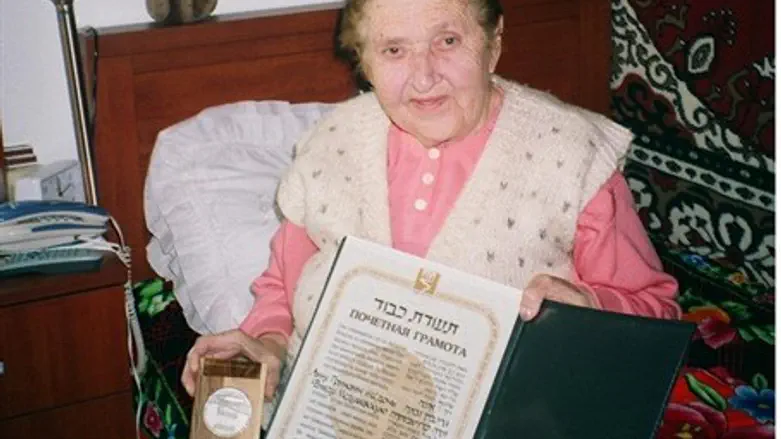
In 1941, a young girl learned that it is not enough simply to avoid danger to one's self. Sometimes, her parents taught her, one must stand up to evil and also protect others from it as well.
Wanda Medushevskaya was only 10 years old when she learned that lesson, but it was knowledge she has carried with her all her life.
Residents of the Ukrainian village of Serebachki, her father – a tailor – was killed in 1937 in one of Stalin's purges.
“They made us 'enemies of the people.' My teacher told me, 'Do you know what you are? You're an enemy of the people,' Medushevskaya tells the interviewer through a translator.
Then the war began, in 1941. Her father, Vasili, had been very friendly prior to his death with the Margolis family, members of the local Jewish community.
“We were all so poor, unhappy, worn out...can you imagine it?” she relates. “They took everything from us and left nothing. Life practically didn't exist for us. And then the war broke out.
“This Margolis came,” she recalls. “They had already heard that the Germans were coming. There was trouble. Jews were being forced out, and many were being shot.”
Margolis asked Wanda's mother if she would help them. There was nowhere else to turn.
“Anna Petrovna, please save us, have you seen that the Germans are killing the Jews?” he pleaded with her mother. “There were five in their family,” Medushevskaya recalls. “Three children and the two of them. My mother was scared, but agreed – what else could we do? It was a unique situation, so we agreed.”
For three long years, the Jewish family hid in the cellar during the winter, and in the attic during the summer.
“They suffered,” she remembers. “During the night they came into the house. The three of them – Anya, she was the oldest daughter, then Abram, then Greesha (Grigori). Then the father, Yolik, and his wife Ida. We struggled all the time.”
After the war, the two families remained close friends.
“Just one neighbor knew. Just one. It was very difficult. Can you imagine? We ourselves were enemies of the people. And we took in Jews.... Can you imagine?”
In 1992, Wanda's son converted to Judaism, married a Jewish woman and moved to Israel. Wanda soon followed, in 1997, and today lives in the southeastern Israeli city of Yerucham, where she sings twice a week in a choir and is active in her community center.
The staff of ATZUM maintains a close relationship with Wanda, and visits her regularly.
It is a little-known fact that 130 non-Jewish rescuers who risked their lives to save Jews from the Nazi murderers during the Holocaust chose to deepen their ties by coming to live in Israel.
At present, Israel is home to a small number of surviving rescuers and widows and widowers of rescuers who require physical and emotional care and support. Yael Rosen, coordinator of the ATZUM Righteous Among the Nations project, says there are a total of some 120 "righteous Gentiles" who saved Jews from the Nazis who today live in Israel, ranging in age from their late 70's to their late 90s, although not all require care.
ATZUM, a non-governmental organization (NGO), provides these rescuers with the basic necessities not provided by Israel's state social welfare. These services include professional caretakers, various geriatric services and phone calls from staff and volunteers. The group also arranges for “adoptive grandchildren” to visit the rescuers and sends flowers and cards for special calendar events such as birthdays, holidays and anniversaries.
“Many of the rescuers came to Israel without family or any other network of support,” explained ATZUM founder Rabbi Levi Lauer. “In this way, ATZUM sends a clear message to them that their heroism and sacrifice has not gone unnoticed and that they will never be forgotten.”